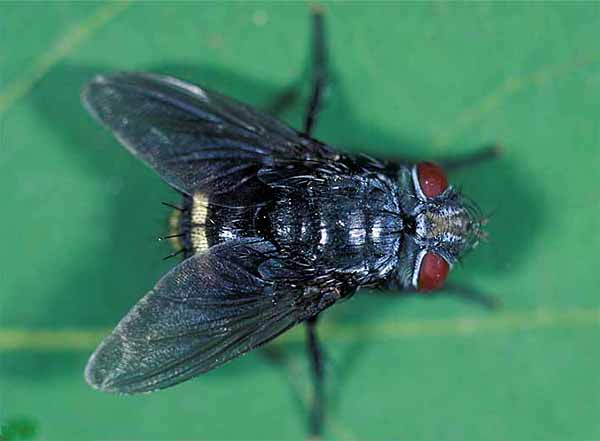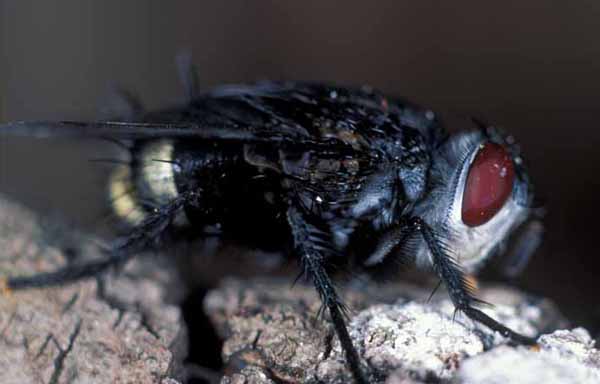Parasitoids of the Wild Silk Moths (Saturniidae)
by Kirby L. Wolfe

Belvosia nigrifrons, found in Mexico, El Salvador, Honduras and Costa Rica.

Tachinid Fly (Belvosia nigrifrons). The larvae of most Tachinidae fly species (pronounced tak-EYE-ni-dee) are parasitoids of insect larvae, especially of butterflies and moths. There are many genera and species, and most are gray or black and look like very spiny houseflies. One genus, Belvosia, has large flies that are often parasitoids of large saturniids.

The pictured flies are Belvosia nigrifrons, a name that refers to their black face, and they have been found in Mexico, El Salvador, Honduras and Costa Rica. These emerged from cocoons of the Rothschildia guerreronis silkmoth found in southern Mexico.
This species of tachinid fly has an interesting method of getting its egg into a caterpillar. The female fly places its egg directly on a leaf right in front of where a caterpillar is eating. The egg is very hard, and survives the caterpillar’s mandibles (teeth). The egg ecloses (hatches) inside the caterpillar and the fly larva then slowly eats the caterpillar. When the caterpillar makes a cocoon, the fly larva develops a shell like a pupa while remaining in the cocoon until it emerges as an adult fly.
Reference: Richard S. Peigler. Catalog of Parasitoids of Saturniidae of the World. Journal of Research on the Lepidoptera 33:1-121, 1994.
Go to Parasitoids Index
Go to Cotesia electrae; the Electra Braconid Wasp,
Go to Eupelmids: Anastatus; tiny species; parasitoids of insect eggs,
Go to Kirby Wolfe Index